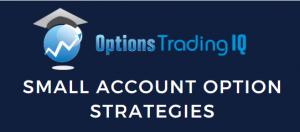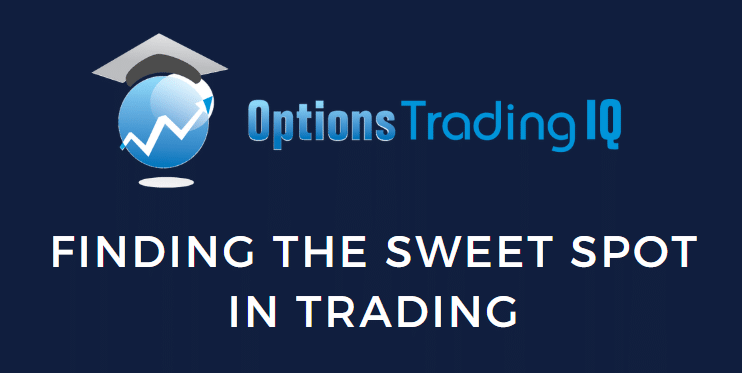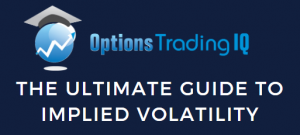

In tennis, the sweet spot is the spot on the racket where you are supposed to hit the ball.
You are playing good tennis when you swing the racket so that the ball consistently contacts the racket’s sweet spot.
Contents
In trading, there is a sweet spot that one needs to find to be consistently profitable.
If a stock investor sells the stock too early, he will not be profitable.
If he sells the stock too late, he will not be profitable.
There is an in-between sweet spot.
If a trader takes profit too early, he may be profitable in that one trade but is not consistently profitable since the profits are too small to overcome the losses.
If a trader takes profit too late, he will not be consistently profitable because the market will take back most of the gains.
There is a sweet spot. We must walk that middle path.
The trader will not be profitable if a stop loss is set too tight.
Stops keep getting hit.
The trader will not be profitable if the stop loss is set too far away.
Losses are too large.
There is a sweet spot.
Is the sweet spot to take profits at a one-time risk?
Two times risk? Or 3x?
The sweet spot depends on the trader.
If a trader is too aggressive, he will not be profitable.
If a trader is too conservative, he will not make money.
If a trader takes too much risk or takes too little risk, both will lose.
There is a sweet spot.
If an options premium trader (such as an iron condor trader) makes adjustments too late, the trade will not be profitable.
If he makes adjustments too soon or makes too many adjustments, the trade will not be profitable.
There is a sweet spot.
Why The Sweet Spot Is Difficult To Find
If you have played tennis and traded, you might wonder why the sweet spot is easier to find than in trading.
Of course, everyone learns at different speeds, and it depends on whether the individual is suited to learn that particular task.
Generally speaking, one can learn to swat balls with the racket in a few weeks.
And in a few months, they can consistently hit the balls in the racket’s sweet spot.
Why Is This Timeframe For Trading Measured In Years Instead Of Weeks And Months?
Why can we learn tennis much faster than learning to trade?
This is because the laws of physics are consistent.
It is not random (see footnote).
The feedback is consistent.
If you hit the ball a certain way, it will consistently bounce a certain way.
Consistent feedback is a great facilitator for proper learning.
The market does not behave like this. Its feedback is not consistent.
You could be doing something right, and the market sometimes gives you a bad outcome. Sometimes, it gives you a good outcome.
You could be doing something wrong, and the market sometimes gives you negative feedback.
But sometimes, it gives you positive feedback instead.
The feedback is somewhat random.
How are we supposed to know what is right and what is wrong if the feedback is random?
This is what is known as a “wicked learning environment.”
I didn’t make this up.
Google it.
A wicked learning environment is difficult to learn because its behavior is unclear, patterns aren’t always repeated, and feedback is delayed or inaccurate.
As Howard Marks writes in his book The Most Important Thing: Uncommon Sense for the Thoughtful Investor:
“Valid approaches work some of the time but not all. And investing can’t be reduced to an algorithm and turned over to a computer. … No rule always works. The environment isn’t controllable, and circumstances rarely repeat exactly. Psychology plays a major role in markets, and because it’s highly variable, cause-and-effect relationships aren’t reliable.”
Imagine that you are trying to learn tennis (or pickleball, for that matter) when the gravity of the Earth randomly changes.
About 68% of the time, you get the gravity of the Earth (which is what you would expect).
But all the other times, you might get the gravity of Jupiter as the ball comes to you.
Or you might get the gravity of the Moon. And you don’t know what you will get.
That would make learning tennis that much more difficult, and it would take years to learn.
Is It Possible To Find The Sweet Spot?
If that is the case, is it even possible to find the sweet spot in trading?
Yes, it is. It just means that it would take more time.
I have seen traders and investors who have found the sweet spot and are consistently profitable.
The reason is that the market is NOT completely 100% random.
It is just random enough to be “wicked” but consistent enough such that the patterns and probabilities emerge with enough observations.
In the tennis analogy, you still get the gravity of the Earth 68% of the time.
So, slightly more than half the time, you are able to play proper tennis.
The market’s price movement will move in an expected range of about 68% of the time.
The significance of the 68% is that it is one standard deviation away from its average.
So traders and investors with enough observations and practice can occasionally hit the sweet spot (perhaps about 68% of the time).
Footnote:
In the above, I said that the laws of physics are consistent and not random.
For all practical purposes and in everyday living, this is true of classical physics.
However, physicists who study the microscopic realm of quantum mechanics would argue that point.
They would be correct in that concepts such as wave-particle duality and quantum superposition introduce elements of randomness or probabilistic behavior in rare scenarios so that outcomes of physical law are not deterministic.
We hope you enjoyed this article on finding the sweet spot in trading.
If you have any questions, send an email or leave a comment below.
Trade safe!
Disclaimer: The information above is for educational purposes only and should not be treated as investment advice. The strategy presented would not be suitable for investors who are not familiar with exchange traded options. Any readers interested in this strategy should do their own research and seek advice from a licensed financial adviser.











A great analogy, Gavin. I’ve been trading for about 10 years now, and learning to play tennis in a world with shifting levels of gravity is a very apt description of it. I found myself laughing as I read. Thanks.